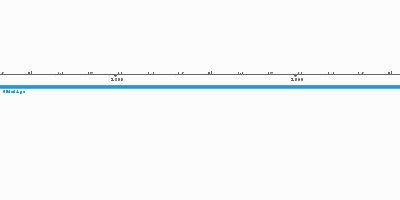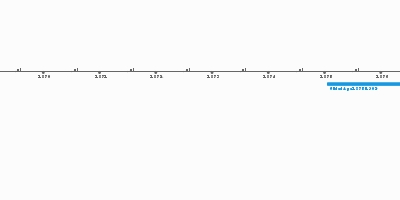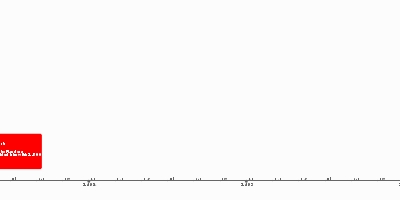Trade Union Civil Rights
Category: Historia
Actualizado: hace 3 meses atrás
Autores
Created bygabriella houghton
Attachments
Eventos
Key
Political change = purple
Social Change =Pink
Economic Change = Green
Important People = Redthe governments view about TUs was
very laissez faire during the start of
the period
-this allowed for monopolies like
Rockefeller and Carnegie to to form and
gain from big profitsSherman Antitrust Act 1890
- restricted monopolies
- aPullman Strike 1894
- involved President Cleveland who sent 2000
federal troops to put down the strike
- killed 4 strikers
- as a result the Omnibus Indictment Act was passed
and wouldn't be removed until 1933
- this would prohibit strikers from trying to persuade
others to strike with them
therefore limiting union powerLockner v New York 1905
- Supreme Court reject the law to limit
bakers working hours and didn't accept arguments
protecting the bakers healthCoppage v Kansas 1915
ruling allowed for yellow dog contracts to formNational Labor Relations Act of 1935, aka Wagner Act
- regulated and reduced labour disputes
- allowed for collective bargaining
- and allowed for strikes
- employers like Henry ford wouldn't recognise unions until 1941Clayton Antitrust Act 1914
- passed by president Wilson
-limited court injunctions
- and allowed for employees to have peaceful
protestsTaft-Hartly Act 1947
- limited union power by preventing unions
from running closed shopsEqual Pay Act 1963
- made it illegal to discriminate wages based
on the gender of a person or their raceCivil Rights Act 1964
-prohibited discrimination on grounds of gender
race, colour or religionPATCO strike 1981
-over 12000 members walked off their jobs
after contract negotiations with Federal Aviation Administration
-President Reagan ordered them back to work to avoid decreasing
production or interfering with the economy
- said if they didn't get back to work in 48 hours they'd be fired
- used scab labour which made striking almost ineffective,
as the job continued to those who agreed to be apart of scab labour
-NRLB was unwilling to help strikersPresident Reagan
- he wanted to remove the legislation that hindered
US economyHomestead strike 1892
-- lasted 143 days
- resulted in violence between strikers and
pinkertons
- caused the shooting and stabbing of Henry Frick due to failed
collective bargaining
- decreasing unionisationJohnsons Great SocietyDuring the gilded age the TUs formed
went on to spread influence to politics both
nationally and locally
-The Great Railroad Strike of 1877
- It was ignited by wage cuts and poor
working conditions affecting railroad workers,
- particularly those at Baltimore and Ohio Railroad
- strikers faced violent confrontations with law enforcement
- though it increased Government to be more harsh on TUS, it helped
to increase labor right awareness across USAFair Labour Standards Act 1938
- established a minimum wageThe Supreme Court declared
the NIRA unconstitutionalNational Industrial Recovery Act (1933)
-to regulate industry for fair wages
and prices that would stimulate economic recovery.
-National Recovery Administration (NRA)
was a prime agency established by U.S. president Franklin D. Roosevelt
-unions during this period
did exist just on a smaller scale
- they were exclusive for skilled workers
- employers had no legal obligation to recognise the
unionsUnions struggled to gain membership in this
period because they saw AA and Immagrants as a threat.
- this is because they'd accept the poor working conditions and
long hours for less pay
- allowing for contract systems to form, making it so employers could
lay off workers in quiet periods, and lay them off for workers who'd accept lower
pay.Knights of Labor 1869
- member ship of 700,000 by 1886
- thought due to the violence at the Haymarket
Affair caused a drop back to 20,000Haymarket Affair 1886
- violence between workers and police
- 4 strikers killed initially, leading to a march in retaliation
which caused the death of 7 police men
- further increasing retaliation from the police, killing 4 more
strikers
- this was blamed on german immigrants leading to 8 arrests
and 5 were executed
- because of this it further increased the divide between white and ethnic group
workers as well as skilled and unskiled
-making it harder to unioniseAbolition
- slaves were now freedmen and could work
- often worked for lower salary, often exploitedMolly Maguires 1873
- Irish immigrant workers, wanting better working
conditions.
- miners pay was cut resulting in the strike, and railroads
being derailed
- pinkertons got involved arresting 19 men and executed
themWorld War 1
- improved position of TUs due to
demand for goods increasing and so employers
would want to increase production to make more profit
so would be more willing to comply to what the workers wantedNational War Labor Board 1918
-Set up by president Wilson
- allowed for negotiations to take place
- decreasing working disputesWorld War 2
- control of industries was taken away from
the manufacturer
- did weaken employers and tipped the balance
in favour of the workers
- giving them an 8 hour working day etcUnion membership had increased
from 719,00 in 1900
to 8,700,000 in 1940union member ship increased to 16 millionUnion membership peaked at 20 millionby 1990 union membership was
decreasing again
back down to 16 millionThe Great Depression 1929-33
- due to increasing unemployment it led to decreasing
members in unions as people just wanted jobs
- as people were more desperate for job, they would be exploited for themSickness Clubs
- they were used so employees could
contribute some of their income to when they are illInequality increased
2% of the population owned 30%
of the wealthUnskilled workers wages was 30%
of skilled workers due to MechanisationWomen's TU League
- it was used to encourage women to unionise
as they made up 17% of the work force
and only 2% were in TUsWelfare Capitalism
-stopped workers form joining unions
- used by Henry Ford up until 1941Due to the economic boom of the 20s
it meant that TUs were less needed in times of prosperity
as people were happy, things were affordable, and work was good
- increase in real wages tooCongress of Industrial Organisations 1937
- encouraged AA groups to join TUs to increase
union powerStrong Arm Tactic
- they were used by companies to intimidate
workers into not joining TUs
- unskilled workers didnt benefit from NDWW2
- saw an increase in wage by 70%
- women workers increased and joined pre-existing
unions which allowed them to campaign for equal rightsDue to increase automisation
it decreased blue collar workers and so union
membership fell by 50%
- increasing white collar workers would be uninterested
in TUs as they had better conditions and better pay, mostly
skilled workersAFL-CIO 1955
formed to follow non-racial policies
recognised women workers and represented AA
- brought together approximately 80% of union workers across
the USUnion membership dropped to 31%
due to a cotninued lack of worker solidarity-the use of militant action from the
Black Panthers weakened movement
despite their aim to help AA economy. It caused a divideCoalition Of Labor Union Women 1974
- increase women in unions as they were being
represented
- response to the AFL-CIO reluctance to recognise
womenKennedy New Frontier
Social Impact
- paved the way for future
legislation to be passed
- also amended the fair labour
standards act
- increased minimum wageBlack Panthers
- they were focused on Black worker
solidarity over workers in general, which lost them support
- they did aim to improve economic situation, with the
Ten-Point Programme
-Nixon Affirmative Action
- increased AA getting jobs, so they could improve their
economic situation
-may weaken the movement of the BP, but it allowed
AA to improve their situation1950s
- average in come was 35% higher than
the end of WW2
- 75% of people owned cars
- 87% owned at least 1 TV1920s
- did little to increase union power as workers
gained prosperity through increasing real wages
= no need to strike1880s
-the end of reconstruction had -ve
impact on unions
- less workers needed so decrease
in wages
- also decreased union powerPost WW2
- new tech and automisation= decrease
blue collar workers
- decreasing power of unions as many moved
to white collar work, and saw no reason to join
-union membership fell by 50%
-increasing working women also decreased union power
as they were often male dominated1970s
- decrease in economic growth due
to foreign competition
- increasing reliance on high tech, which meant
more skilled workers, who were reluctant
to join unions
- the work for was too dispersed and so it was harder to
unioniseWagner Act
-more successful than the NIRA
- regulated work production and reduced labour
disputes with collective bargainingNWLB
- decreased working day to 8 hours
- workers had to agree to non-strike clauses
- maintained productionBoth World Wars saw an increase
in demands for goods and so there was a chance to
increase profits
- by employers seeing this chance they would willingly
work with their workers to help maintain production
to gain as much profit
( though after the wars these gains would decrease)Economic Boom 20s
- real wages rose and unemployment fell
- welfare capitalism decreased union rights
they couldn't strikeWW2
- increase in wages by 70%
- Union membership increased to 15 million by 1945
from 9 million in 1938Industrial Workers of the World1905American Federation of Labor AFL 1886Knights of Labor 1869Henry Ford 1920
- doubled daily wage to $5
- introduced profit sharing
- decreased working hoursGilded Age
-Fastest growing period for the economy
7% growth rate per year
- wages for skilled workers increased by 60%workers had few rights in this period
and by 1889 there was 2000 deaths of rail workers
due to the poor working conditionsearly TU apart from the AFL
all get ruined by the violence that had
taken place
- AFL if the only one to continue to gain membership
after this period, and later joins with the CIOBrotherhood of Sleeping Car Porters 1925
- AA union
- membership of 18,000
-Pullman Company and the BSCP brought the porters the single largest wage
increase they had ever received under
an agreement with the company
-secured agreements:
- established a 240-hour work month
- eliminated the system of determining rates by mileage,
- guaranteed pay for preparatory and terminal time
-and rests on tripsCesar Chavez
- National Farm Workers Association 1962
-became the United Farm Workers of America.
- Salad Bowl Strike in 1970Períodos
Depth Study- Gilded AgeDepth Study - New DealDepth Study- Black Power




Comments